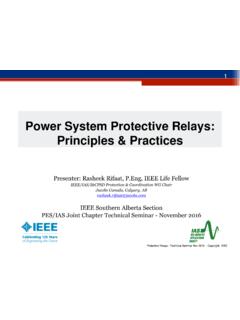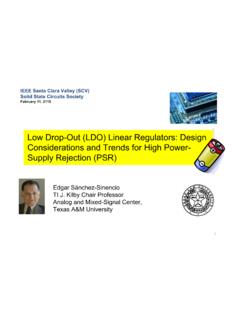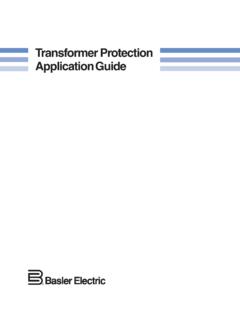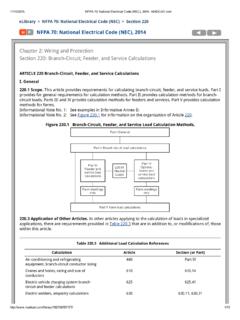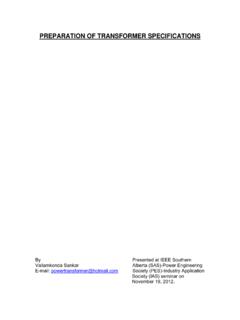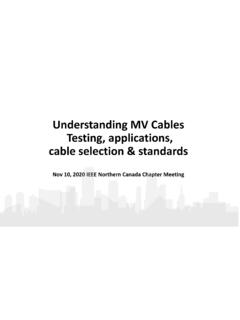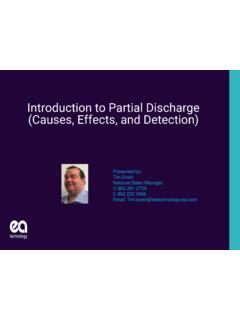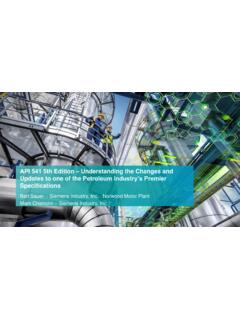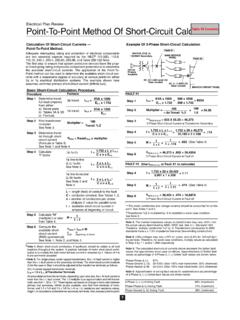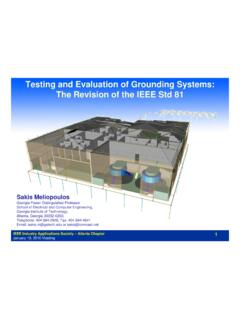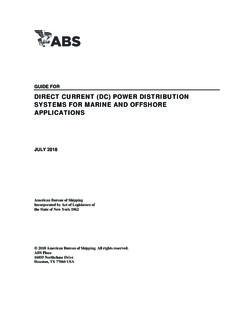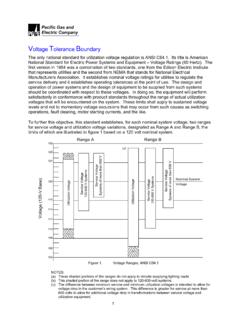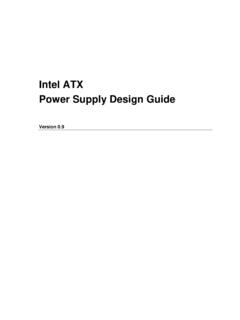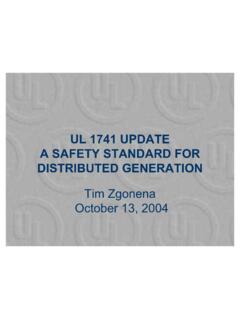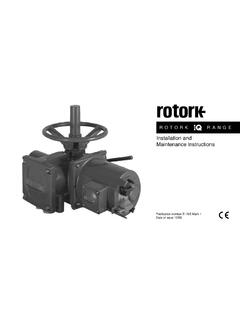Transcription of IEEE Power & Energy Society TECHNICAL REPORT Jan 2013 …
1 ieee Power & Energy Society Jan 2013 TECHNICAL REPORTPES-TR1 Dynamic Models for Turbine-Governors in Power System Studies PREPARED BY THE Power System Dynamic Performance Committee Power System Stability Subcommittee Task Force on Turbine-Governor Modeling ieee 2013 The Institute of Electrical and Electronic Engineers, Inc. No part of this publication may be reproduced in any form, in an electronic retrieval system or otherwise, without the prior written permission of the publisher. THIS PAGE LEFT BLANK INTENTIONALLY ii iiiTASK FORCE ON TURBINE-GOVERNOR MODELING CHAIRMAN: POUYAN POURBEIK MEMBERS AND CONTRIBUTORS Roy Boyer Les Hajagos Kevin Chan Louis Hannett Graeme Chown Wolfgang Hofbauer James Feltes Fhedzi Modau Carlos Grande-Moran Mahendra Patel Luc G rin-Lajoie Shawn Patterson Fritz Langenbacher Stefan Sterpu Daniel Leonard Alex Schneider Leonardo Lima John Undrill ACKNOWLEDGEMENTS The Task Force (TF) is part of the ieee Power & Energy Society , reporting through the Power System Stability Subcommittee of the Power System Dynamic Performance Committee.
2 The Scope was approved in June 2007 by the Power System Stability Subcommittee and by the Power System Dynamic Performance Committee. We are truly grateful for the support of our sponsoring subcommittee and committee. The Task Force gratefully acknowledges the participation of the following individuals in the TF meetings (or by email) and their feedback, comments and suggestions: Eric Allen, Elmer Bourque, Bob Cummings, Donald Davies, Michael Gibbard, Sven Granfors, Joseph Hurley, Howard Illian, Dmitry Kosterev, Juan J. Sanchez-Gasca, Lee Taylor, Chavdar Ivanov, David Vowles and Anthony Williams iv CONTENTS Contents 1. INTRODUCTION.
3 1-1 Purpose of Turbine-Governor Models in Power System Studies .. Scope of Work .. 1-1 2. STEAM TURBINES .. 2-1 Turbine Modeling .. 2-1 Steam Turbine Models (TGOV1, IEEESO and IEEEG1) .. 2-1 Steam Turbine Model with Basic Boiler Dynamics [13] .. 2-4 Detailed Steam Turbine Model the TGOV5 model .. 2-9 The TGOV5 model .. 2-9 An Example use of the TGOV5 Model .. 2-10 Primary Frequency Control Deadband and Limiter .. 2-12 Fast-Valving .. 2-14 Aspects of Steam Turbine Modeling .. 2-14 Guidelines and Summary .. 2-17 3. GAS TURBINES AND COMBINED CYCLE Power PLANTS .. 3-1 Gas Turbine Modeling .. 3-1 Overview of Gas Turbine Theory.
4 3-1 Modeling Gas Turbines .. 3-3 GAST .. 3-3 GAST2A .. 3-4 3-4 CIGRE model [9] .. 3-8 Simplified but Explicit Modeling of the Ambient and Speed Dependence [16]3-10 Vendor Specific Models .. 3-13 Combined Cycle Power Plants .. 3-13 Overview of CCPP .. 3-13 Implementation of the CIGRE HRSG and ST model in ERCOT .. 3-14 Guidelines and Summary .. 3-19 4. Hydro Turbines .. 4-1 Hydro Turbines .. 4-1 Governors .. 4-2 Water Column .. 4-5 Frequency Regulation Studies .. 4-9 Modeling Guidelines and Summary .. 4-11 .. 5-1 6. Further Reading on Turbine-Governor Modeling .. 6-1 APPENDIX A: Parameters for the IEEEG1 + LCBF1 Model.
5 A-1 APPENDIX B: Deadband .. B-1 APPENDIX C: Typical Parameters for the GGOV1 .. C-1 APPENDIX D: Vendor Specific Model for GE Heavy-Duty Gas Turbines .. D-1 APPENDIX E: Vendor Specific Model for the ALSTOM GT26B Heavy-Duty Gas Turbine .. E-1 PPENDIX F: ALSTOM Combined Cycle Power Plant Models .. F-1 PPENDIX G: Solar Turbine s Perspective on the GT Models .. G-1 vAA viINDEX OF AUTHORS Authors Listed in Alphabetical Order Chapter 1 Introduction P. Pourbeik Chapter 2 Steam Turbines G. Chown, J. Feltes, F. Modau, P. Pourbeik (lead-editor) and S. Sterpu Chapter 3 Gas Turbines and Combined Cycle Power Plants R. Boyer, K. Chan, J. Feltes, L. Hannett, D. Leonard, L.
6 Lima, F. Modau and P. Pourbeik (lead-editor) Chapter 4 Hydro Turbines W. Hofbauer, L. G rin-Lajoie, S. Patterson (lead-editor), P. Pourbeik and J. Undrill Appendix A Parameters for the IEEEG1 + LCBF1 Model P. Pourbeik Appendix B Deadband P. Pourbeik Appendix C Typical Parameters for the GGOV1 L. Hannett and D. Leonard Appendix D Vendor Specific Model for GE Heavy-Duty Gas Turbines L. Hannett and D. Leonard Appendix E Vendor Specific Model for the ALSTOM GT26B Heavy-Duty Gas Turbine K. Chan Appendix F ALSTOM Combined Cycle Power Plant Models K. Chan Appendix G Solar Turbine s Perspective on the GT Models F. Langenbacher Main Editor: P.
7 Pourbeik 1. INTRODUCTION The Scope of Work The scope of this Task Force is to review and make recommendations related to the use of models for turbine governors for Power system simulations. Recent documents published by CIGRE1, the Western Electricity Coordinating Council (WECC) and others have provided newly developed models for use in modeling thermal turbine governors, modern combined cycle Power plants and hydro turbines. There is, however, significant benefit in reviewing the recommendations in these documents and consolidating them with the usage of older models that still exist in commonly used simulation programs. The Task Force REPORT is presented in three parts.
8 Chapter 2 deals with steam turbines. Chapter 3 deals with gas turbines and omel i odocu ef l c bined cycle powr plants. Chapter 4 deas wth hydr turbines. Each m nt provides the olowing: othe 1. A summary f a hierarchy of models for various turbine governor systems. e2. A discussion of the various xisting models in most commercial software tools and what may be considered as legacy models. Additionally, in this first chapter a section is provided below that discusses the primary motive for modeling turbine governors and the recommended usage of the models. In many grid codes around the world outside of North America, model performance and validation requirements are defined and must be complied with as these are deemed statutory ( [1]).
9 The Task Force has intentionally avoided the discussion of grid codes since such discussion are outside the scope of this group. What is presented here is for guidance and educational purposes. This document is not a standard, nor does it claim to address or comment about any standards or grid codes. This Task Force was approved as a working body of the Power System Stability Subcommittee, of the Power system Dynamic Performance Committee of the ieee Power & Energy Society in June, 2007. The Purpose of Turbine-Governor Models in Power System Studies Power system stability studies deal primarily with transient angle and voltage stability, small signal stability and frequency control and stability.
10 Reference [2] provides the definitions of each of these types of stability problems. In practice, it is not possible to completely decouple these various stability problems from one another. Particularly in smaller systems, a single event could give rise to multiple inter related phenomena of frequency, voltage and angular stability problems. 1 The International Council on Large electric Systems ( ). 1-1 With this understanding in mind, the modeling of turbine governors is particularly important for studies related to transient angular stability, frequency stability and control, and to a lesser extent small signal stability.
